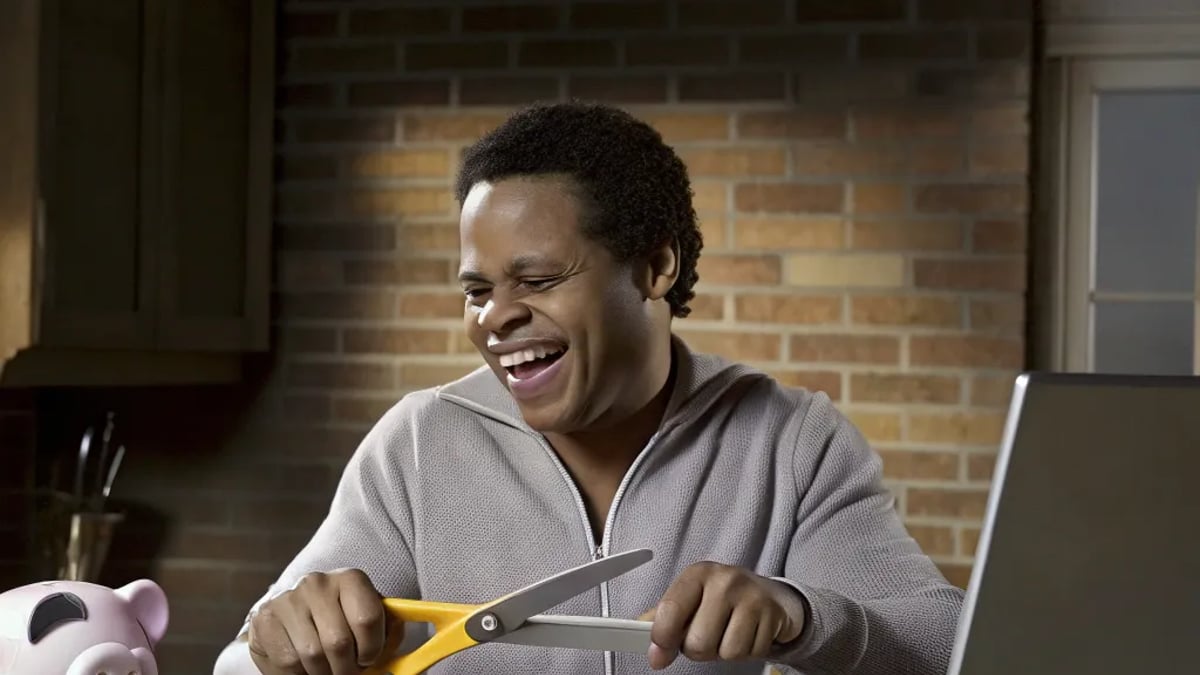
When my credit card statement showed yet another month of spending beyond my means, I knew something had to change. Like many people, I was caught in the cycle of earning decent money but somehow always ending the month with nothing to show for it. After tracking my spending for a few weeks, I discovered I could realistically trim $500 from my monthly budget without feeling deprived. Here's exactly how I did it, and how you might be able to do the same.
The Expense Audit: Finding Where My Money Was Really Going
Before making any cuts, I needed to understand my spending patterns. This wasn't about judgment—it was about awareness. I downloaded three months of bank and credit card statements and categorized every expense in a simple spreadsheet.
What I found shocked me.
My Amazon purchases alone totaled nearly $280 monthly, yet I could barely remember what I'd bought. My grocery bill averaged $650 for just myself, and I was still ordering takeout 2-3 times weekly. Meanwhile, subscription services were silently draining $135 monthly from my accounts.

"You can't manage what you don't measure," goes the old business adage. For me, this expense audit was eye-opening and slightly embarrassing. But it also revealed clear opportunities.
The Target: $500 Monthly Reduction
I set a specific goal: cut $500 from my monthly expenses without feeling like I was sacrificing my quality of life. This meant being strategic rather than just slashing randomly.
Here's how the savings broke down across different categories:
Taming the Amazon Beast: $150 Saved
Amazon made spending money almost too frictionless. One-click purchasing and Prime delivery had turned me into an impulsive buyer. Here's what worked for me:

- I removed the Amazon app from my phone, forcing me to use the less convenient browser version.
- I implemented a 48-hour waiting period for any non-essential purchase over $30. I'd add items to my cart but wait two days before checking out. Surprisingly, I abandoned about 70% of these potential purchases after the cooling-off period.
- I cancelled my Prime membership. This not only saved the $139 annual fee but also eliminated the "free shipping" psychology that encouraged unnecessary purchases.
One Reddit user in r/personalfinance shared a similar strategy: "I started asking myself if I would drive to a store right now to buy this item. If the answer was no, I didn't really need it."
This approach helped me reduce my Amazon spending from $280 to about $130 monthly—a $150 savings without feeling deprived.
Food Budget Overhaul: $200 Saved
My food spending was my biggest opportunity area. Between groceries and takeout, I was spending nearly $850 monthly just to feed myself. Here's how I trimmed this down:
Grocery Shopping Strategy
I implemented a few key changes to my grocery shopping habits:
- Meal planning before shopping and sticking to a list
- Shopping at a discount grocer for staples instead of the premium store I'd been using
- Reducing meat consumption to 2-3 meals per week instead of daily
- Buying seasonal produce rather than whatever looked good
- Purchasing store brands for basics like rice, beans, and cleaning products
As one r/budgetfood user noted: "The easiest way for me to lower my cooking budget was to cut back on meat-focused meals and instead use eggs and beans/chickpeas as a protein source."
Takeout Reset
I didn't eliminate takeout entirely—that would have felt like punishment. Instead, I:
- Limited restaurant meals to once weekly as a treat
- Set a $40 cap on delivery orders
- Started cooking double batches on weekends to have easy meals for busy weeknights
These changes reduced my food spending from $850 to about $650 monthly—a $200 savings while still eating well and enjoying occasional restaurant meals.
Subscription Audit: $85 Saved
Like many people, I'd accumulated subscriptions I barely used. I made a list of every recurring charge and evaluated each with three questions:
- Did I use this service in the last month?
- If yes, did I get at least $X value from it (where X is the monthly cost)?
- Is there a free or cheaper alternative that would work nearly as well?
This audit led me to cancel:
- A premium meditation app ($70/year)
- A fitness app I rarely opened ($15/month)
- Two streaming services I barely watched ($25/month combined)
- A cloud storage upgrade I didn't need ($3/month)
I kept my music streaming service and my most-used video platform, so I didn't feel deprived. This careful pruning saved me $85 monthly.
Energy and Utility Optimization: $65 Saved
As a homeowner, I realized my monthly utility bills offered another opportunity for savings. I made several adjustments:
- Installed a programmable thermostat to reduce heating/cooling when I'm not home
- Replaced remaining incandescent bulbs with LEDs
- Added weatherstripping to drafty doors and windows
- Called my internet provider and negotiated a lower rate by mentioning competitor offers
- Reduced my cell phone plan to a more appropriate data level
According to Point.com, "Many homeowners overlook the savings potential in their utility bills. Small changes can add up to significant monthly savings."
These relatively simple changes reduced my utility spending by approximately $65 monthly without affecting my comfort.
What Didn't Work: Failed Expense-Cutting Experiments
Not every cost-cutting attempt was successful. In the interest of honesty, here are a few approaches that didn't work for me:
- Extreme couponing: The time investment wasn't worth the savings, and I ended up buying products I wouldn't normally choose just because they were discounted.
- DIY cleaning products: While environmentally friendly, my homemade solutions didn't work as well as store-bought products, and I found myself using more to compensate.
- Eliminating all coffee shops: Trying to never buy coffee outside the home made me feel deprived. Instead, I reduced frequency while still allowing occasional treats.
Learning from these failures helped me focus on sustainable changes rather than extreme measures that wouldn't last.
How Can You Find Your Own $500?
If you're inspired to find your own monthly savings, here's a framework that worked for me:
1. Track Everything for 30 Days
Use a budgeting app or simple spreadsheet to record every expense. Categorize spending into major buckets like:
- Housing
- Transportation
- Food (groceries vs. dining out)
- Entertainment
- Shopping
- Subscriptions
- Utilities
2. Identify Your "Big Three" Opportunity Areas
Most people have three categories where significant, relatively painless cuts are possible. Mine were Amazon spending, food, and subscriptions. Yours might include:
- Transportation (car payments, insurance, gas)
- Housing (could you refinance or negotiate rent?)
- Debt payments (consolidation or refinancing)
- Insurance premiums
- Phone/internet plans
3. Set Specific, Measurable Goals
Rather than vague intentions to "spend less," create concrete targets:
- Reduce takeout from 8 meals to 4 meals monthly
- Lower grocery bill by $25 weekly
- Cut subscription costs by 30%
4. Implement Changes Gradually
I didn't make all these changes at once. I started with the Amazon strategy in month one, tackled food in month two, and addressed subscriptions and utilities in month three. This gradual approach prevented feeling overwhelmed.
What About Income? The Other Side of the Equation
While this article focuses on cutting expenses, I should mention that I also worked on increasing my income during this period. I took on a small freelance project and sold some unused items around my home.
As Mr. Money Mustache notes, "Frugality without sacrifice plus budget optimization are powerful tools, but combining them with income growth creates unstoppable financial progress."
The combination of reduced expenses and increased income accelerated my progress toward financial goals.
The Psychological Benefits Beyond the Numbers
The most surprising outcome wasn't just the $500 monthly savings—it was how these changes affected my relationship with money and consumption.
I found myself becoming more intentional about purchases, asking whether they aligned with my values and priorities. The impulse buying decreased, and I derived more satisfaction from the things I did choose to buy.
Additionally, my home became less cluttered, my environmental footprint smaller, and my financial anxiety significantly reduced. These benefits were worth far more than the $500 monthly savings.
Common Questions About Cutting Expenses
Won't I Feel Deprived If I Cut $500 From My Budget?
This is the most common concern I hear. The key is identifying cuts that align with your values rather than eliminating things that bring genuine joy. In my case, I realized that mindless Amazon purchases weren't actually enhancing my life, while having financial breathing room definitely did.
If a particular expense truly brings you happiness proportional to its cost, keep it! The goal is eliminating waste, not pleasure.
How Long Does It Take to See Results?
I noticed the financial impact immediately, but the psychological benefits took about two months to fully materialize. Initially, I felt some resistance to the new habits, but eventually, they became my new normal.
The first month saved me about $300, and I reached the full $500 monthly savings by month three as all changes took effect.
What If I've Already Cut My Budget to the Bone?
If you've already optimized obvious categories, you might need to consider more significant changes:
- Housing: Could you move to a less expensive home or get a roommate?
- Transportation: Is downsizing your vehicle or using public transit viable?
- Location: Would relocating to a lower-cost area be possible with your work?
Sometimes the biggest savings come from reconsidering these fundamental aspects of your lifestyle.
Final Thoughts: Sustainable Financial Change
The $500 I've cut from my monthly expenses has transformed my financial situation, allowing me to build an emergency fund and begin investing for the future. More importantly, these changes have been sustainable because they don't feel like sacrifices—they feel like optimizations.
Remember that personal finance is personal. My specific cuts might not work for your situation, but the process of thoughtful examination and intentional adjustment can work for anyone.
Disclaimer: This article is based on my personal experience and is intended for informational purposes only. It should not be construed as financial advice. Your financial situation is unique, and you should consult with a qualified financial professional before making significant financial decisions.
Tags

About Elliot J. Branson the Author
Elliot J. Branson is a seasoned financial analyst with over two decades of experience guiding individuals through their investment journeys. His expertise lies in creating personalized strategies to help investors navigate volatile markets and achieve long-term financial success.
Recommended Articles
Finding Reliable Cars at Police Impound Sales
Explore how to find reliable vehicles at police impound sales and learn valuable tips for successful bidding and inspection.
8 Bulk Buys That Can Save You Over Time
Discover 8 bulk buys that can save you money over time, from rice to cleaning supplies. Learn to shop smart and save!
Zepbound for Sleep Apnea? Here’s What to Know
Discover how Zepbound, an FDA-approved medication, may aid in treating sleep apnea linked to obesity through weight loss and lifestyle changes.
Why Everyone Is Buying This Christmas Decoration Early This Year
This year, early Christmas decoration shopping is on the rise, driven by consumer behavior and past supply chain disruptions.
Goodbye Plain Concrete: The Driveway Look Everyone Wants
Transform your dull concrete driveway with stylish alternatives! Discover options that enhance curb appeal and boost your home's value.




